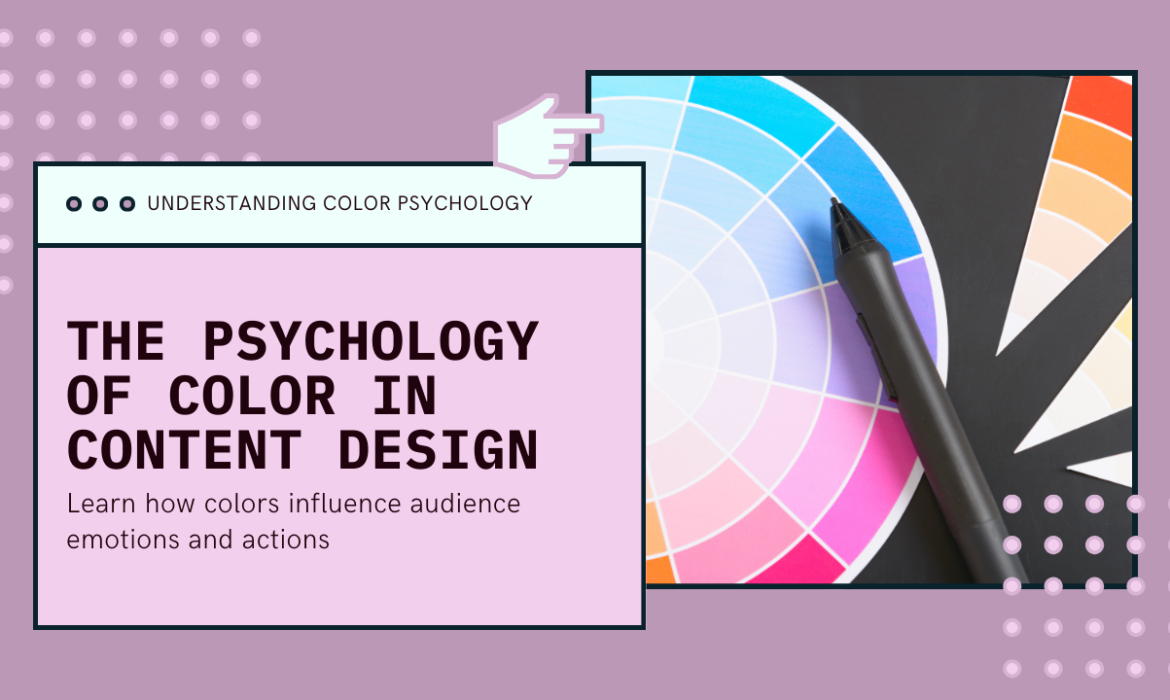081-4797-7173
When it comes to the design world, colors are very important; color in content design is not just for decoration, it is a tool that carries its own message, from reducing emotions to constructing understanding and impacting user habits.
Do not mistake it; the colors you see on digital spaces, fliers, and adverts were carefully chosen to pass a message or to get feedback from an audience.
In this article, we will discuss the psychology of color, how colors evoke different kinds of emotions, what works, and why it works. In the end, you will leave with so much knowledge that can help you create experiences that can leave your audience wanting more.
Psychology Of Color
Colors play a huge role in human emotion and habits; we could be aware of it or not; colors can trigger different kinds of reactions in us that can range from peace to joy, from trust to distrust.
Any design that seeks to create an awesome experience that aligns with an audience must take this into consideration.
Color psychology focuses on the alignment between colors and human emotions, and also the common factors like the culture that shape these interactions.
For example, the color red could evoke the emotion of passion in one culture, and in another culture, could signify celebration. These interactions of color are more universal in nature than personal.
For a designer, understanding color psychology is not all about the visual appeal it gives; it is about using colors to impact audience experiences and preferences and create solid brand personalities. Color choices play a huge role in influencing how your audience engages with your content.
The Impact of Individual Colors in Designing
What kind of impact can different colors have on different individuals? The impact is totally different, and so different individuals will associate different colors with different things; people will always feel differently with each color.
However, research made over the years has shown that some colors tend to be associated with some particular meaning/emotions.
The color Red ♥️
Red is usually associated with the emotions of passion, excitement, confidence, and warmth. It can also cause negative emotions of fear and danger.
Many designers use the color red with a mix of neutral colors, e.g., white and grey, to reduce its potential to dominate or showcase strong emotions.
The color Blue 🔵
Blue evokes the emotions of peace, quietness, and stability; it is also associated with negative emotions of sadness and depression.
Designers use lighter versions of blue to depict calmness and relaxation; darker shades of blue can be used to convey professionalism and trustworthiness when designing a company logo or website.
The color Yellow 🟡
Yellow is used to evoke positive emotions like happiness, hope, and warmth from your audience; yellow is rarely connected with negative emotions of frustration and caution.
Yellow is not often used by designers because it is hard to decipher if not placed at par or opposite another color; it can be used as an accent color, or the darker shades are used to evoke positive emotions from your audience.
The color Green 💚
The color Green is used by designers to express growth, nature, or health. The color Green can mean many things in different contexts; it is one of the most used colors in design.
For designers, lighter greens convey the emotions of energy, while darker shades of green will convey the sense of nature or health
The color Black 🖤 and White🤍
These two contrasting colors evoke strong emotions from your audience. White evokes the emotions of cleanliness and goodness, while black is used to spark the ideas of gracefulness, power, and ritual.
Color Combinations In Design
Graphic designers will consider color combinations aside from colors that stand alone when deciding colors to pick for a brand color scheme.
This is where the use of complementary or analogous color schemes or warm or cool colors comes in.
Complementary colors are located opposite each other on the color wheel, e.g., red and green, yellow and purple/orange and blue. Pairing these colors will draw the attention of your audience to your designs.
Designers use complementary colors to make designs remarkable. Analogous color schemes happen when colors that appear close to each other on the color wheel are used together in a design, for example, using yellow and green together or blue and violet in a design. This can be used to give some form of harmony to a design for your audience.
Warm Color Vs Cool Colors
Warm and cool colors can evoke certain emotions from an audience. Warm colors like red, orange, and yellow evoke positivity and energy, while cool colors like blue, green, and purple are associated with calmness and relaxation.
What Works and Doesn’t Work
Some factors that designers must consider when making designs for different brands or audiences are cultural influences and gender/age influences;
Cultural Influence: One Color, Different Meanings
As a designer, it is paramount that you study your audience before making any design for any brand because colors can mean different things to a different audience and places.
For instance, The color white in Western culture often means peace, purity, and cleanliness- wedding dresses or doctors’ coats, but in some Eastern cultures like China, white is the color used in burials for mourning, which evokes sadness and grief.
Red in China is a color that symbolizes good luck, celebration, and prosperity, but in other cultures, red means danger or caution. Understanding this as a designer would help you better produce designs that will resonate with your audience and not irritate them.
Gender/age Influences
Gender and age can have a huge impact on how colors can be used or perceived by different individuals. Studies have shown that women will notice small color differences better than men. Men and women tend to prefer different colors. A designer must keep this in mind when selecting colors for a website, flier, or brand.
Contrast and Accessibility
The use of color is necessary but how colors interact is paramount too. Contrast helps you present your design as both visually appealing but also understandable to your audience.
A bad contrast can make texts difficult for people who are visually impaired to read, e.g., the use of orange on a green text can be cut,e, but it can be too shiny to take your audience’s attention from the main thing, etc.
Color Flexibility
For consistent experiences for your audience, designers have to take into consideration colors that can easily adapt to any mobile screen or device.
Do not sacrifice the visual experience of your audience on mobile phones; prioritize colors that help your audience to read and understand.
Pick The Right Colors
Before picking a color for a design, start by ruminating over the different emotions and feelings that the color you are picking gives and what you would like the brand to be known for.
Then, plan out which colors can help you communicate or convey the message based on the psychology of color.
Experiment Color Combinations
A designer should test out different kinds of color for your designs; you can try using different color schemes to make the same flier just to find out which one is better; you can use tools like A/B testing to grade each of the designs, too, before sending them out.
Conclusion
A designer must be detailed about his audience to better portray emotions that resonate with them using color psychology.
Using the right color can go a long way to getting a response from your audience, ranging from a call to action to, actually becoming a loyal follower, or building your brand’s credibility.
Colors evoke positive and negative emotions so a designer must know his onions to better convey the right messages.
0






